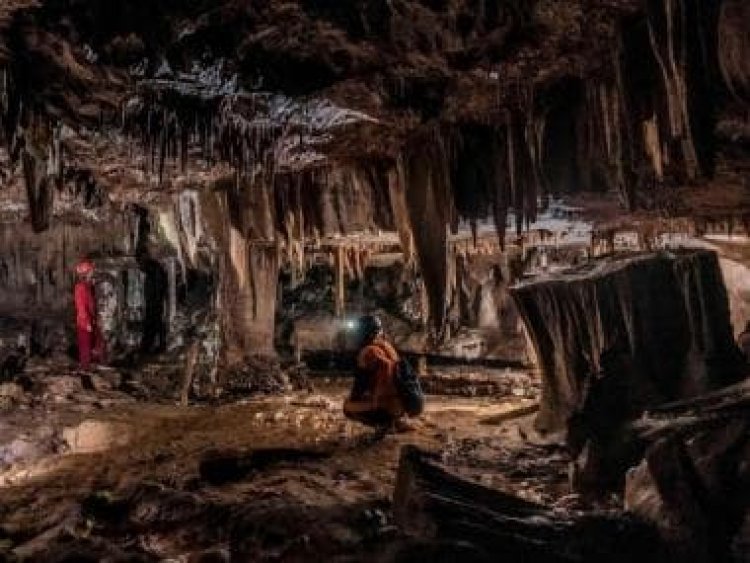Explained: What is the Mawmluh Cave in Meghalaya that is on UNESCO’s 'First 100 IUGS Geological Sites' list?
Explained: What is the Mawmluh Cave in Meghalaya that is on UNESCO’s 'First 100 IUGS Geological Sites' list?

It’s a proud moment for India as Meghalaya’s Mawmluh Cave is now on the United Nations Educational, Scientific and Cultural Organisation’s (UNESCO) First 100 International Union of Geological Sciences (IUGS) Geological Sites list.
Meghalaya’s Chief Minister Conrad Sangma took to Twitter to break the news that has made all Indians happy.
Mawmluh Cave in Sohra, Meghalaya known for the ‘Meghalayan Age’ has been selected by @theIUGS (@UNESCO) as one of the ‘FIRST 100 IUGS GEOLOGICAL SITES’ in the world. @narendramodi @kishanreddybjp @JoshiPralhad @GeologyIndia pic.twitter.com/wA5eNwVYmQ
— Conrad Sangma (@SangmaConrad) October 1, 2022
The caves, which are also called Krem Mawmluh, are the fourth longest in the Indian subcontinent.
We take a closer look at the details of the cave.
What is IUGS?
The International Union of Geological Sciences was founded in 1961 with 121 national members. The organisation is represented by over a million geoscientists and is one of the World’s largest scientific organisations.
Among its many tasks, the organisation encourages international co-operation and participation in Earth Sciences to give a boost to human welfare.
The IUGS Secretariat is headquartered in Beijing. It collaborates with other organisations to work on topic-specific Commissions, Task Groups, Initiatives and Joint Programmes.
With an aim to foster dialogue and communication among different parties who specialise in earth sciences, IUGS organises international projects and meetings, sponsors symposia and scientific field trips as well as produce publications.
Currently, IUGS is involved in a wide range of activities like identifying the problems of terrestrial and planetary geological processes, encouraging innovations to test new geological concepts, models and methodologies, among other things.
This year the organisation celebrated its 60th anniversary. The celebrations were supposed to take place in 2021 but were postponed due to the pandemic.
What is an IUGS Geological Heritage Site?
According to the official website iugs60.org, “An IUGS Geological Heritage Site is a key place with geological elements and/or processes of scientific international relevance, used as a reference, and/or with a substantial contribution to the development of geological sciences through history.”
Under the list, all kinds of geological sites like tectonic, stratigraphical, sedimentological, petrological, mineralogical, hydrogeological paleontological, geomorphological and those related to the history of geological sciences, are considered.
The scientific community has long demanded the establishment of a global standard for the recognition of geological sites of high international importance.
What makes Mawmluh Cave so special?
Mawmluh Cave is located about 60 km away from Shillong and was first explored by a British official named Lieutenant Yule back in 1844.
The cave is named after a small hamlet in Meghalaya. It is the fourth longest cave in the Indian subcontinent with a total length of seven kilometre of cave passages.
Mawmluh caves contain passages, calcite formations of various kinds and huge caverns. According to a report by trawell, only one-fourth of the cave is exposed to sunlight while the rest of the cave is shrouded in complete darkness.
The entrance is located at a height of 10 feet above sea level and is covered with stalagmite structures – upward-growing mounds of mineral deposits – and other rock formations. There’s a deep pool inside the cave which is formed by five different rivers.
According to a report by Times of India, researchers from the US studied the growth of stalagmite in the last 50 years. They found that it is one of the major reasons why Meghalaya is known to be the rainiest place on earth.
Scientists are also studying the stalagmite deposits to help predict monsoon patterns and droughts, according to Meghalaya Tourism.
What other places are on the IUGS list?
IUGS saw the nomination of 181 candidates from 56 countries.
According to a report by Greek City Times, two geological sites from Greece have made it to the list: The Petrified Forest of Lesvos and Volcanic Caldera of Santorini.
The former is a natural monument that has been preserved and the nomination was submitted by the Museum of Natural History. While the Volcanic Caldera of Santorini’s nomination was filed by the Municipality of Thira.
The Petrified Forest is a rare fossil forest ecosystem that includes large concentrations of petrified trees and animal fossils that were covered with volcanic material 18 million years ago.
The shape of Volcanic Caldera was formed more than 3500 years ago, when a volcanic eruption changed the Mediterranean topography forever. The site sees thousands of tourists every year who come to witness the beauty of the place.
With inputs from agencies
Read all the Latest News, Trending News, Cricket News, Bollywood News,
India News and Entertainment News here. Follow us on Facebook, Twitter and Instagram.
What's Your Reaction?



























































